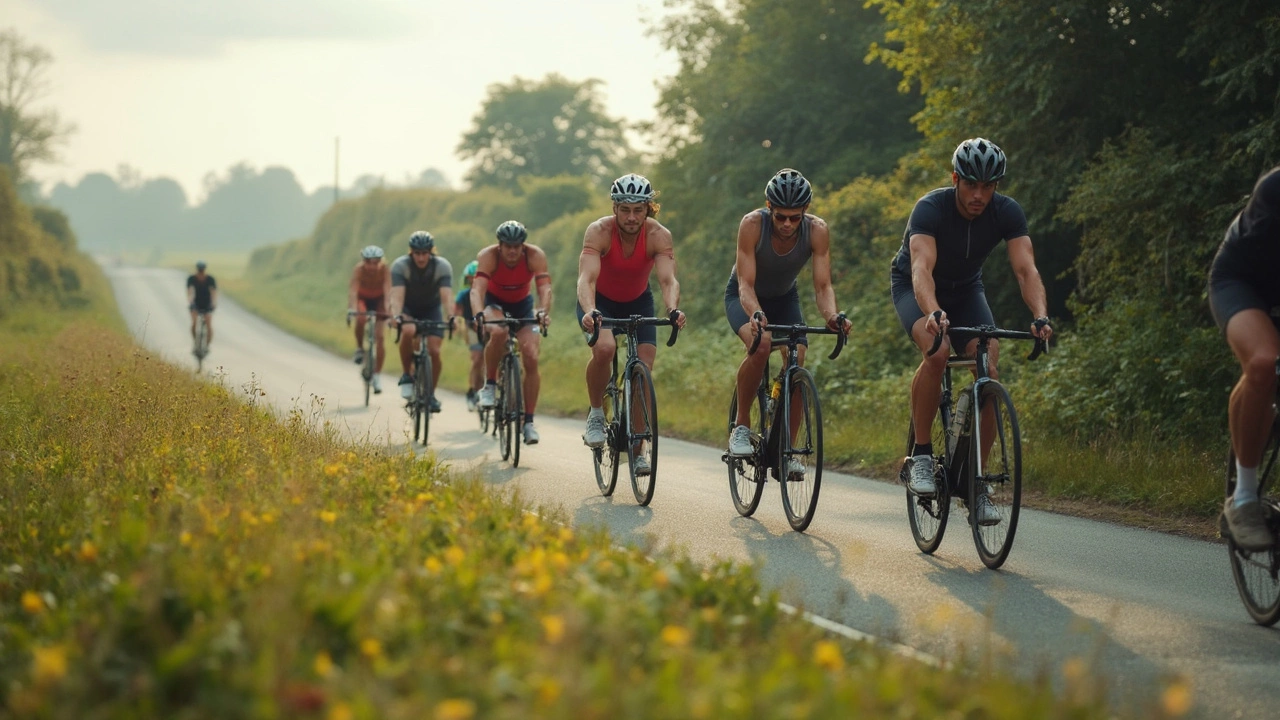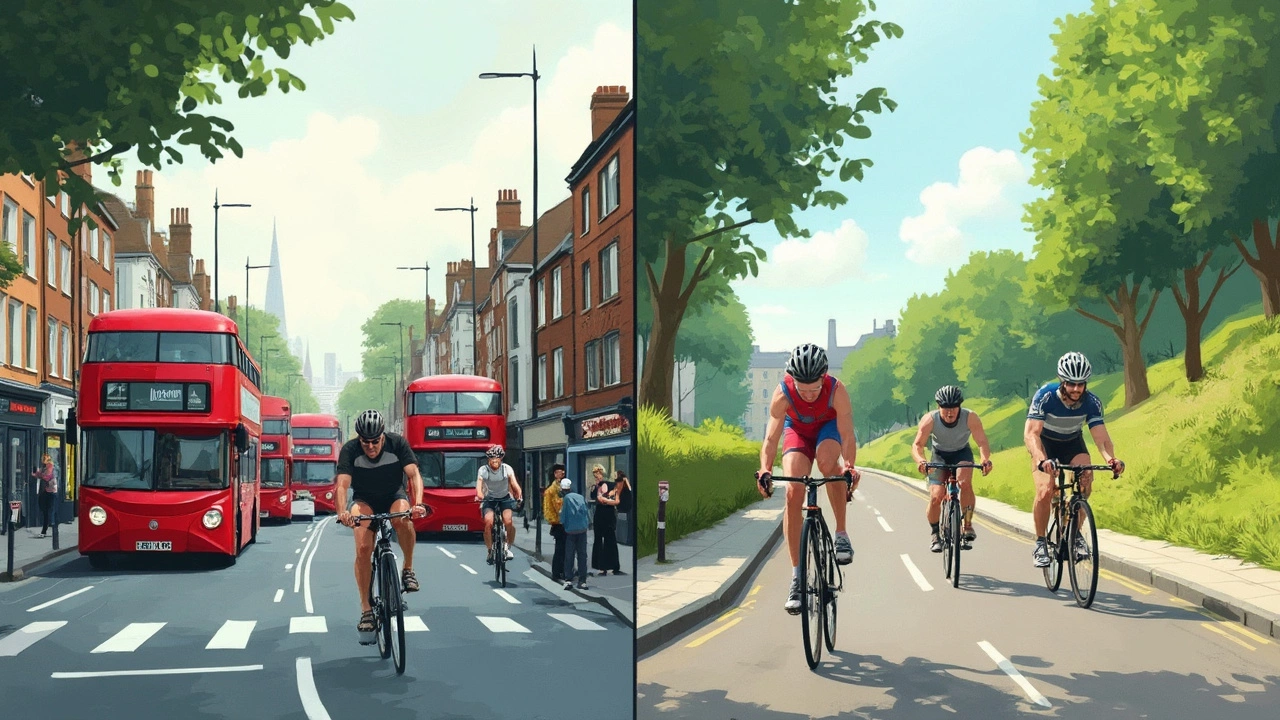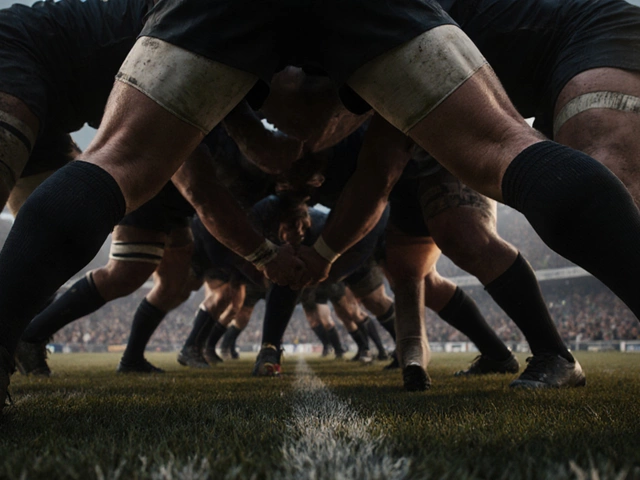
Cycling June 8, 2025
Cycling Body: What Kind of Shape Does Riding Really Build?
Ask any regular rider what parts of their body have changed since they started cycling, and you’ll get a mix of stories—firmer legs, tighter glutes, maybe even a more trimmed-down middle. But let's get real about what cycling actually does to your shape.
If you're picturing huge muscles, forget it. Cycling builds muscle, especially in your quads, calves, and glutes, but the focus is way more on lean strength and stamina. You're not going to bulk up unless you're combining your rides with heavy weightlifting and protein shakes galore.
One thing a lot of folks notice is how cycling melts away extra fat, especially on longer or more intense rides. It's a calorie-burner, plain and simple. But it's not just about losing weight; you’ll probably see more definition, especially in your lower body, as your muscles work harder on tough climbs or fast sprints.
- Cycling and Your Muscles: What's Really Changing?
- Fat Loss and Stamina: The Hidden Perks
- Road Racer vs. Weekend Cruiser: Different Bodies, Different Rides
- Tips to Get the Most Out of Your Weekly Routes
Cycling and Your Muscles: What's Really Changing?
Hop on a bike and pedal for a few weeks, and you’ll notice it—cycling targets specific muscles like nothing else. Your quads (front of your thighs) do most of the hard work, especially when you’re pushing up a hill or picking up speed. The hamstrings (the back of your thighs) pitch in with every stroke, balancing out the load. Glutes get in on the action too, firing every time you push down, while your calves keep everything spinning smoothly.
Don’t think upper body muscles just sit out, either. Sure, you’re not lifting weights as you ride, but your core (abs and lower back) keeps you stable, and your shoulders and arms hold the handlebars, especially on rough routes. You won’t grow huge biceps, but your balance, posture, and subtle muscle tone will improve if you ride regularly.
If you switch up your rides—mixing sprints, climbs, and steady cruising—you’ll notice your lower body get noticeably toned. Legs get more defined, and your glutes perk up. This is what people mean when they talk about getting a classic cycling body: lean, strong, and built for endurance more than size.
One cool fact? Cyclists in the Tour de France have been found to have some of the most powerful quadriceps and calves of any endurance athletes—evidence that cycling molds muscles to handle serious distance and resistance. That said, casual commuting shapes you too; you won’t get bulky, but you’ll move better and feel stronger.
Fat Loss and Stamina: The Hidden Perks
If you’ve ever paid attention to Tour de France riders, you’ll see a common trend: low body fat paired with endless energy. That’s because cycling—whether on flat city roads or up punishing hills—is a seriously efficient way to burn calories. A steady hour-long ride at a moderate pace (think 20km/h) can easily torch 400 to 600 calories, depending on your size and the route. Push yourself harder on the pedals or add some hills, and you’ll watch that number climb even higher.
The magic isn’t just about burning calories during the ride. After a tough session, your metabolism stays revved up for hours, helping your body use more energy even when you’re relaxing on the couch. That’s why so many people shed body fat from regular cycling, even if they’re not eating like saints.
Stamina is the other huge benefit. Want to run up stairs without gasping for air? Spend more time on the bike. Your heart gets stronger, your lungs expand their capacity, and suddenly a two-hour ride starts to feel like an easy warm-up. You may notice you recover faster after tough rides, and day-to-day chores just don’t seem as tiring. Riders who hit longer routes on weekends often find their energy spikes for the rest of the week.
Here’s how to make the most of these hidden perks:
- Mix up your rides. Throw in some intervals or sprint sections to spike calorie burn and boost endurance.
- Don’t skip the hills. Even short climbs shred fat and build muscle definition fast.
- Stay consistent. A few solid, sweaty rides each week beat one mega ride followed by days of nothing.
- Fuel smart after your workouts—replacing carbs and protein helps your body recover and keeps your metabolism humming.
It’s not just about looking good (though results will show). Cycling builds a strong, lean frame and turbo-charges your stamina so you can keep going longer in every part of life. If you’re chasing that classic cycling body, fat loss and big-time endurance go hand in hand.

Road Racer vs. Weekend Cruiser: Different Bodies, Different Rides
If you've ever watched the pros fly by on the Tour de France and then checked out your neighbor who rides for fun on Sundays, you probably noticed their bodies don’t look the same. That’s not just genetics—it’s all about how they ride and how often.
Road racers usually have a lean, almost wiry build. Their legs—especially the quads and calves—are defined, not massive, because speed and endurance matter more than pure muscle size. These riders put in hours of training every week, often mixing long miles with intense sprints or climbs. Carrying extra weight (even in muscle) slows them down, so their upper bodies stay relatively slim.
Now, let’s talk about weekend cruisers. If you cycle once or twice a week, mostly relaxed rides with some friends, your results will be different. You’ll still get stronger legs, burn calories, and feel fitter, but don’t expect chiseled muscle or bodybuilder calves. Instead, you’ll see gradual improvements in stamina and overall tone, with less dramatic changes than a dedicated racer.
Here’s a quick breakdown of how these two groups stack up:
| Type of Rider | Weekly Riding Time | Typical Physique | Common Training Focus |
|---|---|---|---|
| Road Racer | 10-20+ hours | Lean, defined lower body, slim upper body | Endurance, speed, intense intervals |
| Weekend Cruiser | 2-4 hours | Mildly toned, moderate fat loss | Casual fitness, enjoyment, steady pace |
There’s also a difference in cycling body shape from the type of routes. Riders who hit mountains or hilly routes develop extra power in their legs and glutes, just from grinding up longer climbs regularly. Those who stick to flat terrain will see changes, but usually less pronounced in the muscle department.
If you want your body to edge closer to that road racer look, up your mileage, add some intensity, and try riding different terrains. But if you’re just here for fun and good health, you’ll still get real benefits—fitter legs, better heart health, and enough energy to keep up with pretty much anyone.
Tips to Get the Most Out of Your Weekly Routes
If you want the most out of cycling—not just to get fitter, but to see real changes in your body—you’ve got to mix things up on your rides. It’s not about riding longer every single time. Variety actually makes your body stronger and helps prevent burnout.
- cycling body improvement means switching up intensity: Do one ride a week where you push harder, either with sprints or hilly sections. This fires up your muscles and gives you better results than just cruising at one pace.
- Don’t ignore recovery rides. Easy pedal days help your body bounce back and muscle fibers repair, which means stronger legs over time. Mark at least one session a week as "slow and steady"—no pressure to go fast or far.
- Mix in some off-the-bike moves. Squats, lunges, and planks done at home build up your core and support what you do on the bike. Bonus: this also helps if you want better posture and less lower back pain on longer routes.
- Track your routes, times, and how you feel. Use an app or simple notebook. You’ll spot patterns that show what kinds of rides make you feel your best or push you to the next level.
- Hydration and snacks matter. Drink water before, during, and after rides, and bring easy-to-digest carbs if you’re out for over an hour. This keeps your energy up and legs ready to go.
Remember, consistency wins. It’s not about crushing every route—it’s about showing up, mixing in those tips, and letting small changes stack up. Stick with it, and you’ll notice your body shifting shape, bit by bit, week by week.




